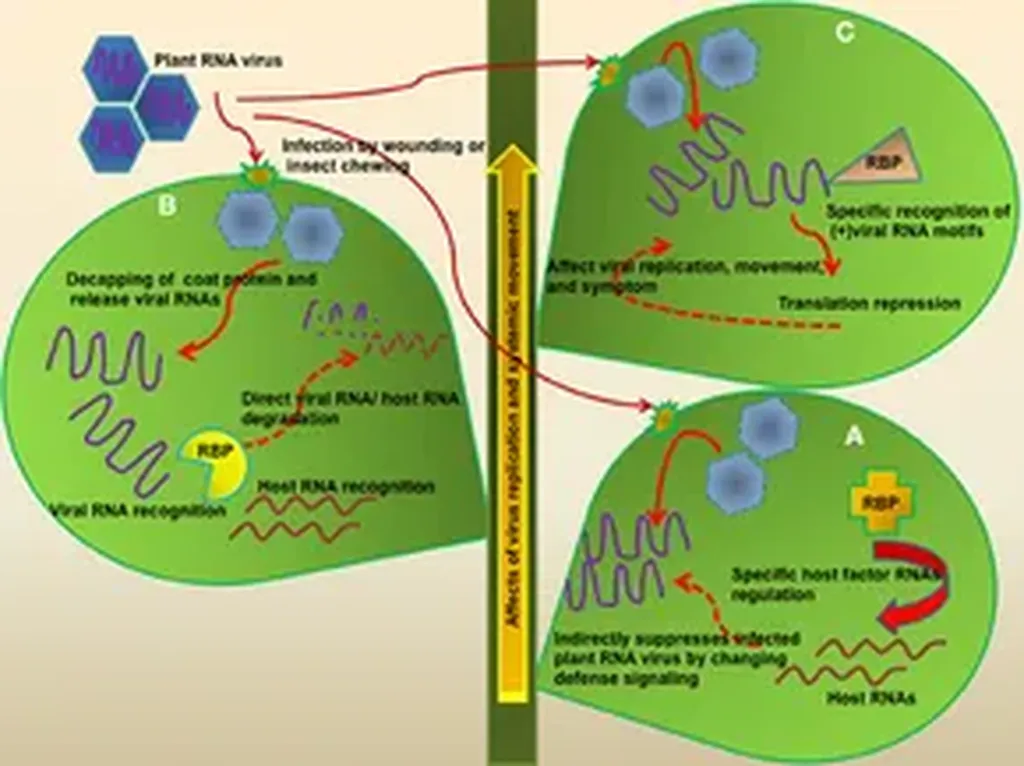In the ongoing battle between plants and viruses, a silent yet powerful defense mechanism has been gaining attention: RNA interference (RNAi). Often referred to as RNA silencing, this process is a critical line of defense that plants employ to fend off viral invasions. While much is known about the major components of the RNAi pathway and the strategies viruses use to counter it, the broader implications of RNAi in viral infection and seed transmission remain less explored. A recent review published in *Plant Communications* (translated from Chinese as *Plant Communication*), led by Fangfang Li from the State Key Laboratory for Biology of Plant Diseases and Insect Pests at the Chinese Academy of Agricultural Sciences, delves into the increasing complexity of RNAi-associated mechanisms and their integration with other biological processes.
RNAi works by producing small interfering RNAs (siRNAs) that target and degrade viral RNA, effectively silencing the virus. However, viruses have evolved suppressors to counteract this defense. Li’s review highlights recent discoveries of non-canonical RNAi pathways and novel host factors involved in RNAi, shedding light on the intricate dance between plants and viruses. “The increasing complexity of RNAi-associated mechanisms and their integration with other biological processes have not been comprehensively summarized,” Li notes, emphasizing the need for a deeper understanding of these interactions.
One of the most intriguing findings discussed in the review is the potential for small RNAs to act across kingdoms, modulating plant–virus–vector tritrophic interactions. This means that the RNAi process could influence not just the plant and the virus, but also the insects that transmit the virus. Understanding these interactions could open new avenues for managing plant virus diseases, which have significant economic impacts on agriculture and, by extension, the energy sector.
The review also explores the prospects and challenges of applying double-stranded RNA (dsRNA) either through transgenes or by spraying it exogenously. This approach could revolutionize how we protect crops from viral infections, potentially reducing the need for chemical pesticides and enhancing sustainable agriculture practices. “We discuss how these findings reshape current views on antiviral RNAi, highlight remaining knowledge gaps, and examine how these advances influence plant–virus co-evolution,” Li explains.
The implications of this research extend beyond agriculture. In the energy sector, crops used for biofuels are particularly vulnerable to viral infections, which can reduce yield and quality. By developing more robust defense mechanisms against viruses, we can ensure a steady supply of biofuel crops, contributing to energy security and sustainability. Additionally, the insights gained from studying RNAi could inform the development of new biotechnological tools for crop improvement, benefiting both farmers and consumers.
As we continue to unravel the complexities of RNAi and its role in plant defense, the potential for innovative solutions to viral infections becomes increasingly apparent. Li’s review serves as a comprehensive overview of the current state of research and a roadmap for future explorations. By bridging the gaps in our understanding, we can pave the way for more effective strategies to manage plant virus diseases and reduce their impact on global agriculture and the energy sector.

